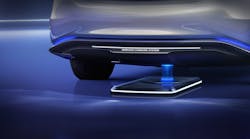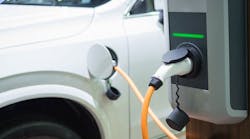Examining EV Charging Infrastructure Issues
Electric vehicles (EVs) run on batteries that require periodic charging. A charging infrastructure is required to provide this power. I talked with Jeff Postelwait, Managing Editor at tdworld.com, and Janelle Penny, Editor in Chief at buildings.com, about some of the issues associated with building out the EV charging infrastructure.
You can check out some Electronic Design articles below about EV charging, including wireless-charging technologies. There's a good article about What building owners need to know about EV charging on buildings.com and How Will the Grid Adjust to EV Charging? on tdworld.com.
In general, the deployment and maintenance of a national EV charging system is almost more challenging than the technology behind EVs and their batteries. Cutting-edge technology is being used for EVs and battery-management systems, including the adoption of solid-state batteries that enable 80% charging in under 10 minutes.
The trick is that newer vehicles need a fast DC charging system like Level 3 systems that push out 50 to 350 kW. Tesla's newer Supercharger systems fall into this category along with networks from Greenlots, EVgo, and ChargePoint.
Significant deployment challenges arise when trying to fit EV charging into an existing infrastructure such as a business or apartment building. The existing electrical infrastructure is often built to accommodate only the building's needs. Adding a charging infrastructure can significantly increase these requirements, especially if multiple chargers are deployed. The same holds true for houses, but the incremental increase is usually for one or two charging stations, not half a dozen or more for a commercial property.
The grid is also a consideration—supplying multiple buildings in a region will tax that part of the infrastructure. How this blends with other options such as solar and other green-energy solutions only complicates matters.
Read More About EV Charging
About the Author
William G. Wong
Senior Content Director - Electronic Design and Microwaves & RF
I am Editor of Electronic Design focusing on embedded, software, and systems. As Senior Content Director, I also manage Microwaves & RF and I work with a great team of editors to provide engineers, programmers, developers and technical managers with interesting and useful articles and videos on a regular basis. Check out our free newsletters to see the latest content.
You can send press releases for new products for possible coverage on the website. I am also interested in receiving contributed articles for publishing on our website. Use our template and send to me along with a signed release form.
Check out my blog, AltEmbedded on Electronic Design, as well as his latest articles on this site that are listed below.
You can visit my social media via these links:
- AltEmbedded on Electronic Design
- Bill Wong on Facebook
- @AltEmbedded on Twitter
- Bill Wong on LinkedIn
I earned a Bachelor of Electrical Engineering at the Georgia Institute of Technology and a Masters in Computer Science from Rutgers University. I still do a bit of programming using everything from C and C++ to Rust and Ada/SPARK. I do a bit of PHP programming for Drupal websites. I have posted a few Drupal modules.
I still get a hand on software and electronic hardware. Some of this can be found on our Kit Close-Up video series. You can also see me on many of our TechXchange Talk videos. I am interested in a range of projects from robotics to artificial intelligence.









